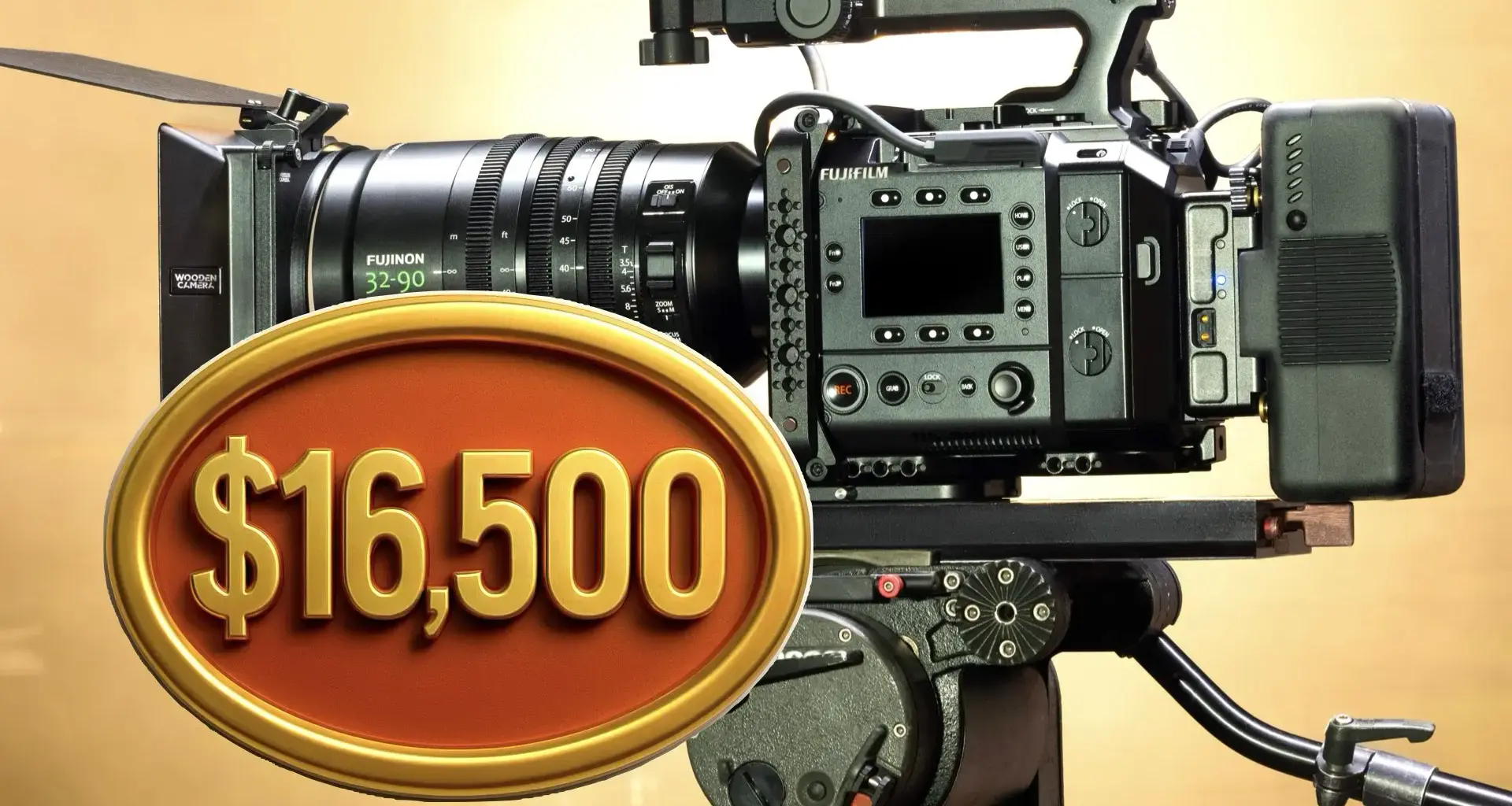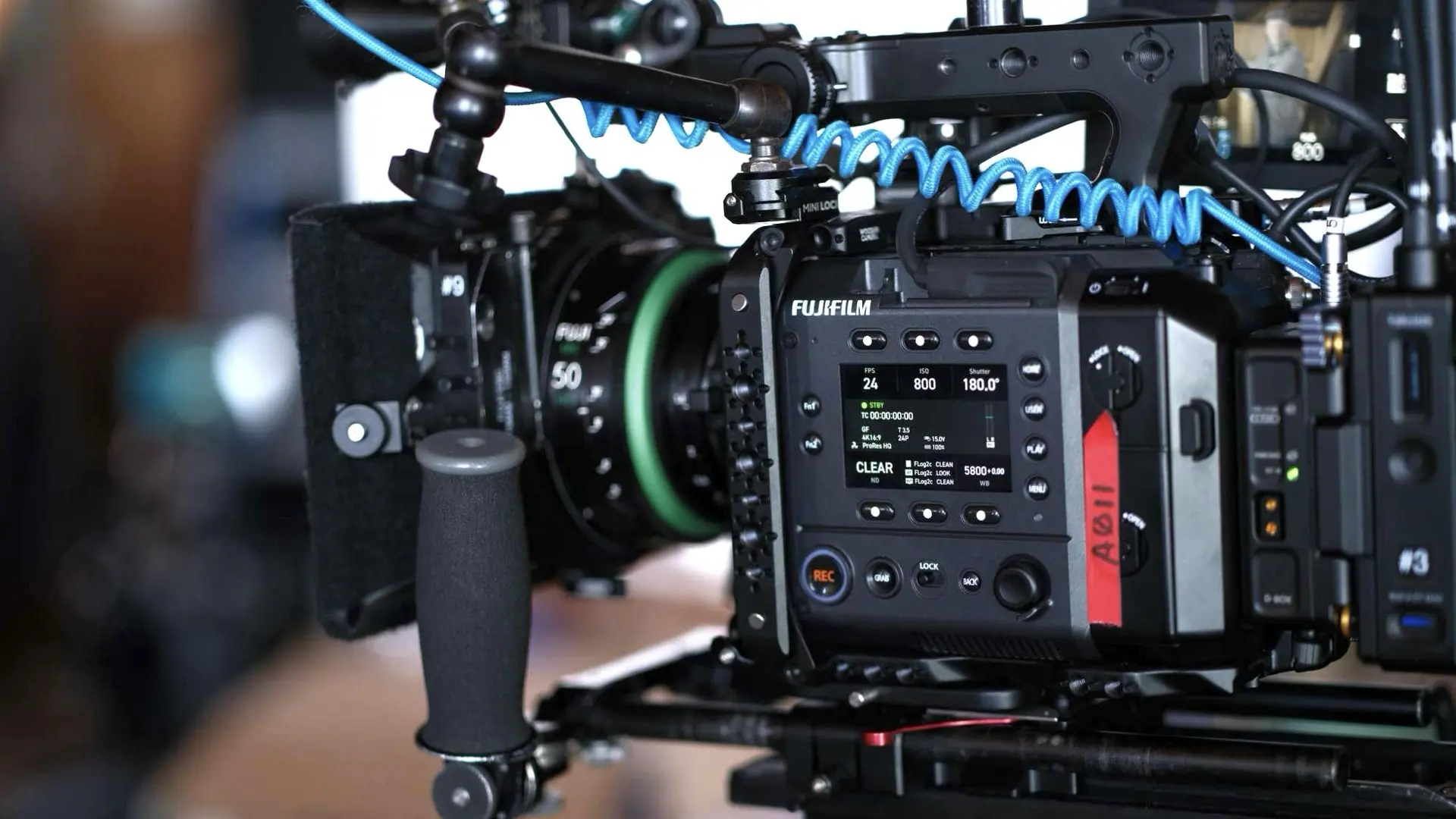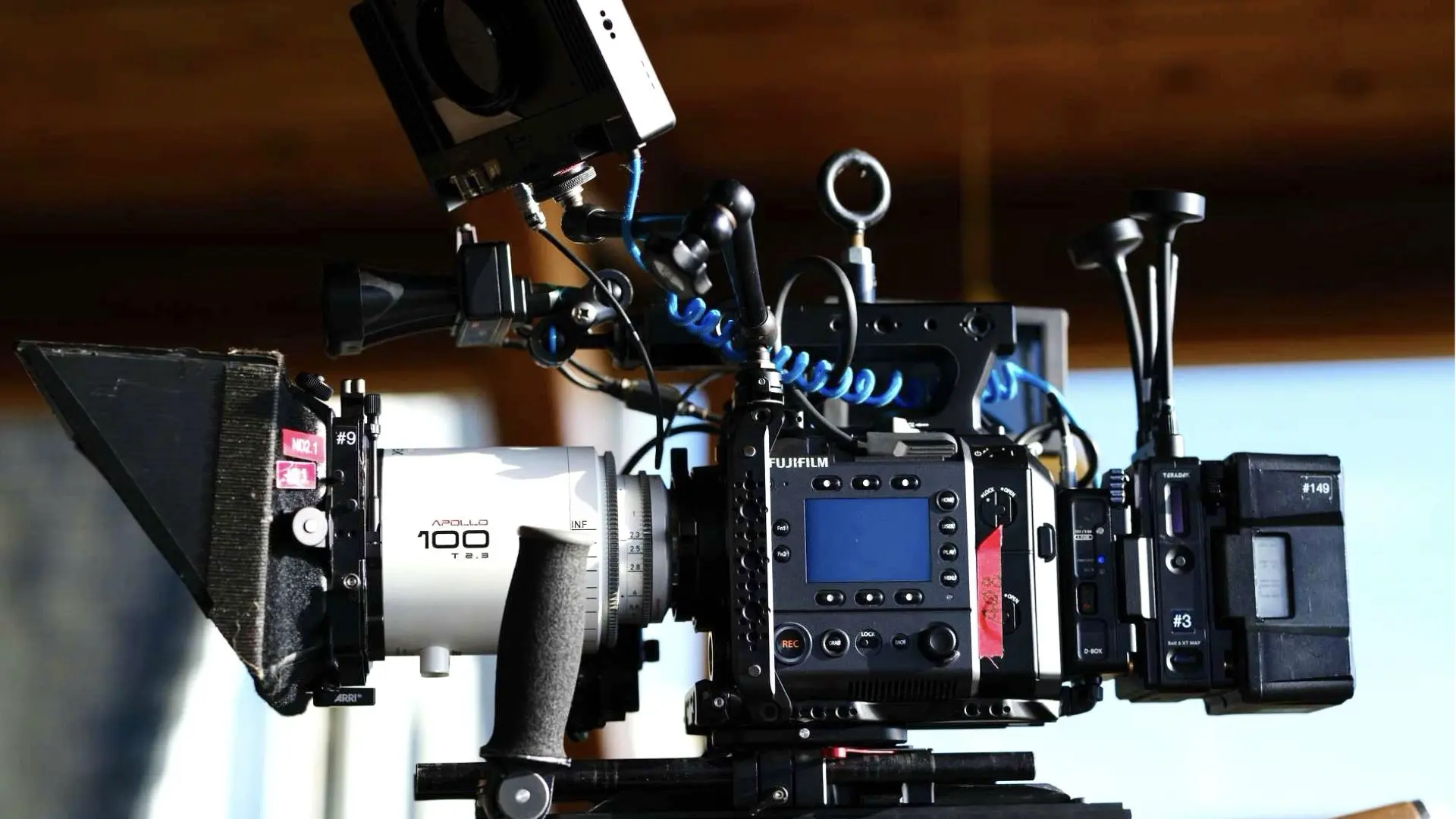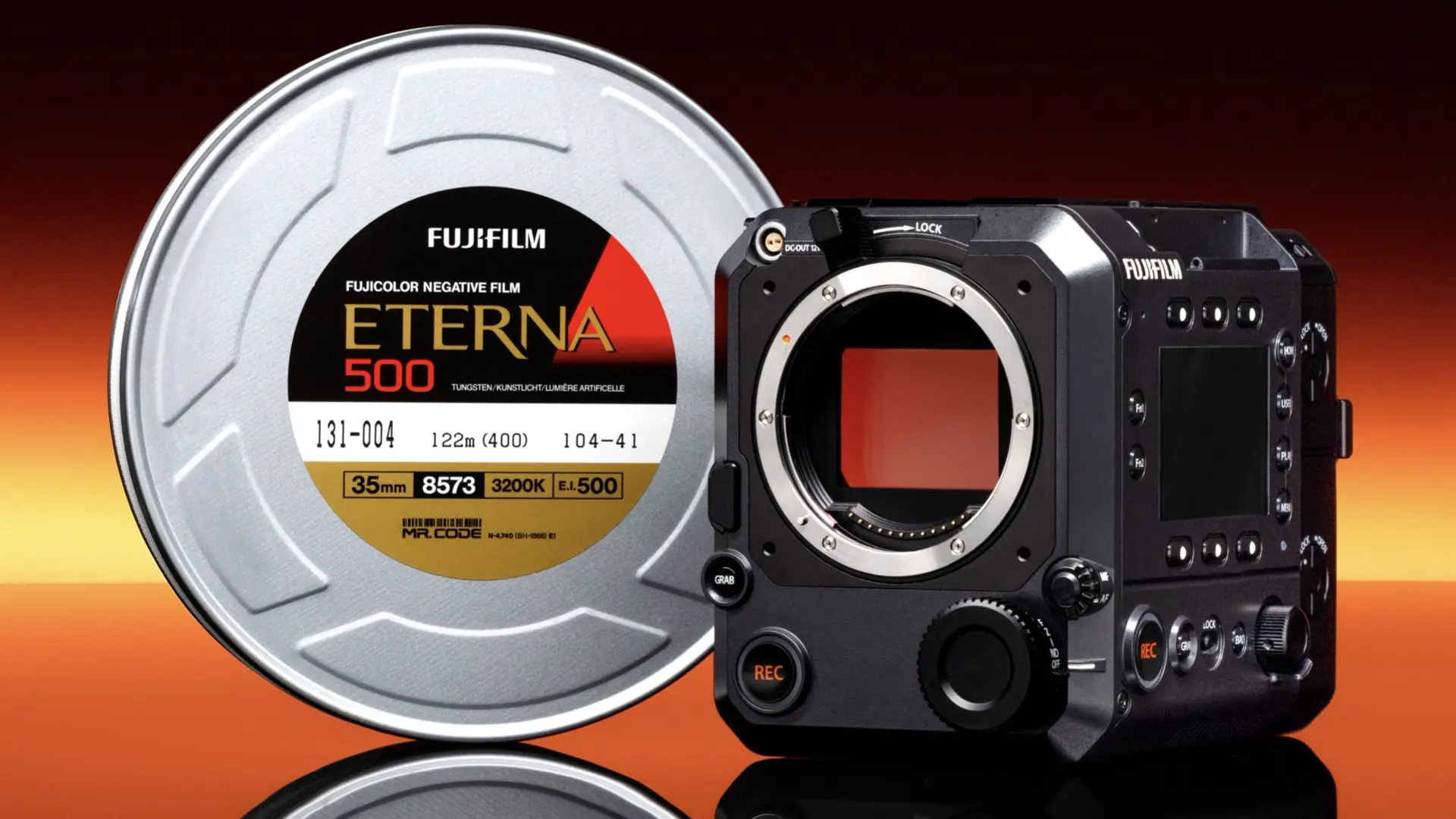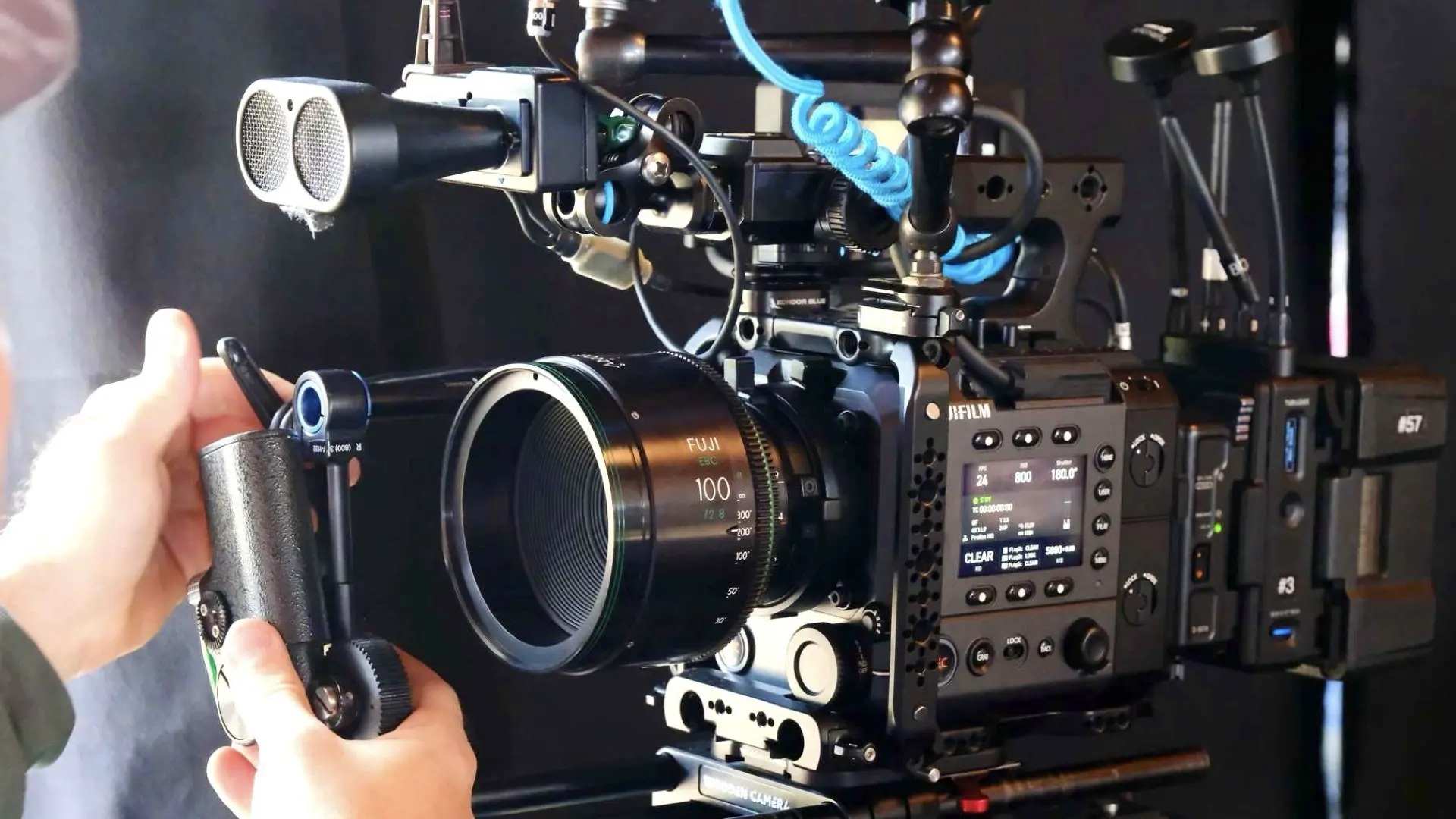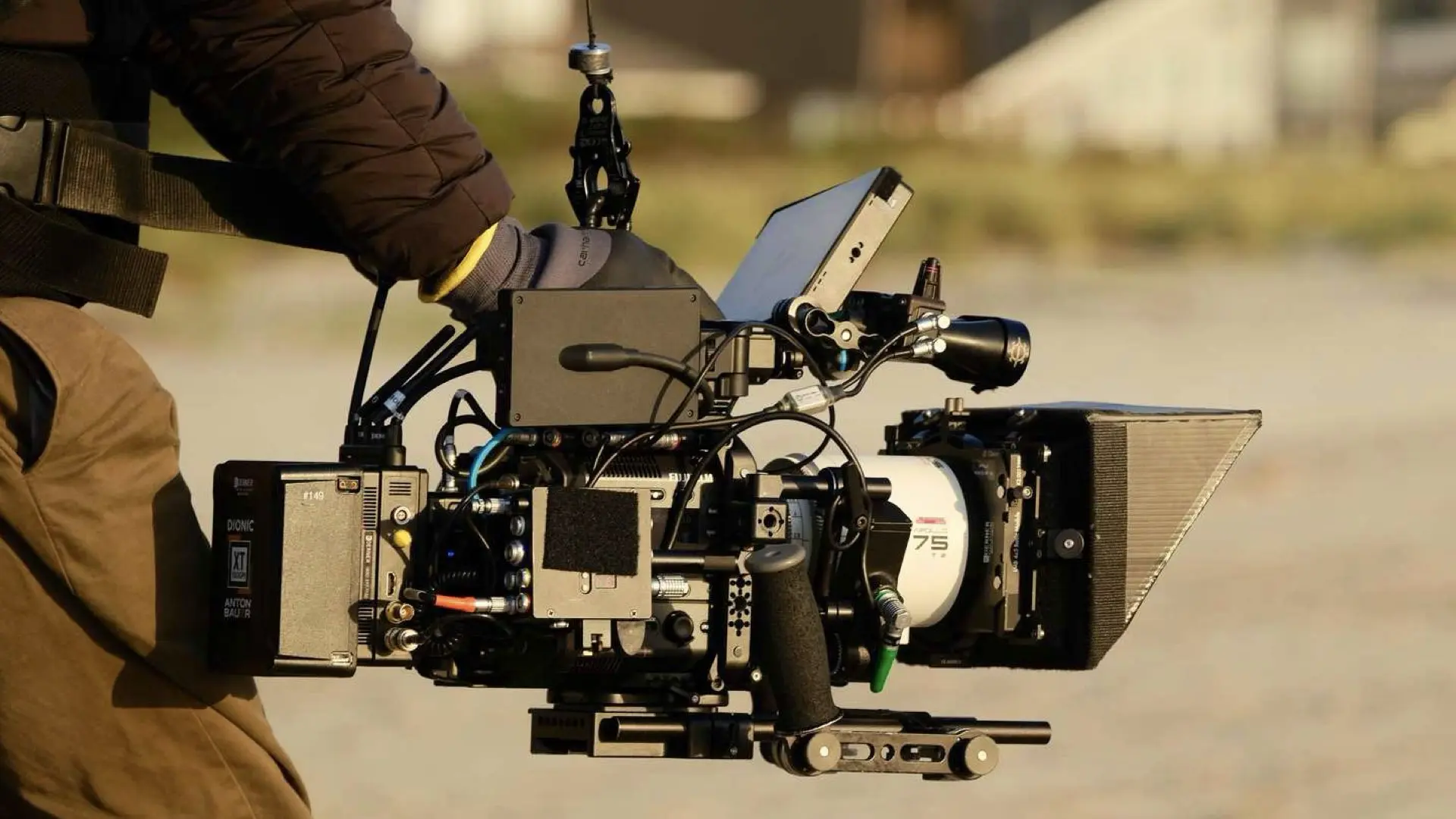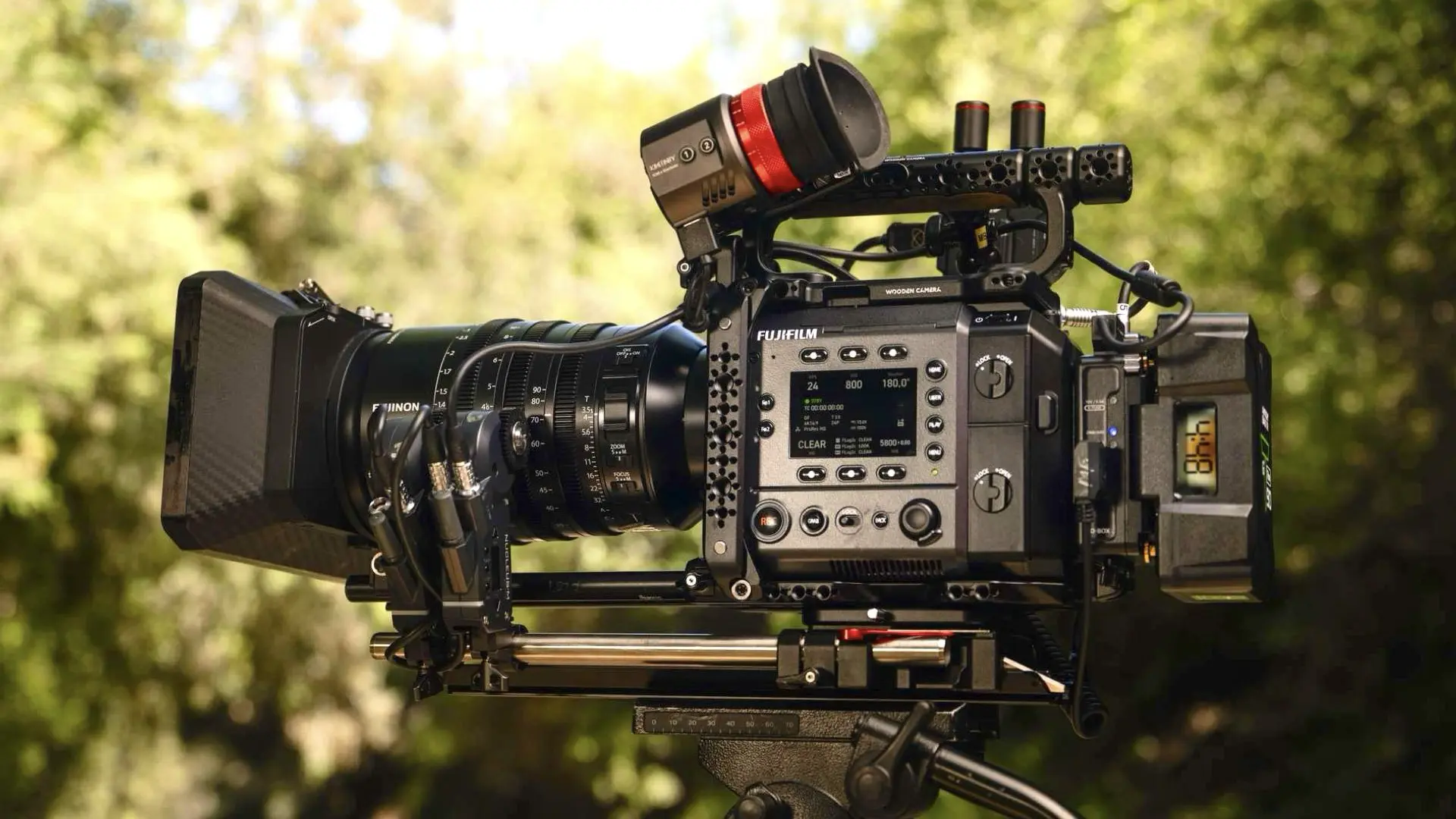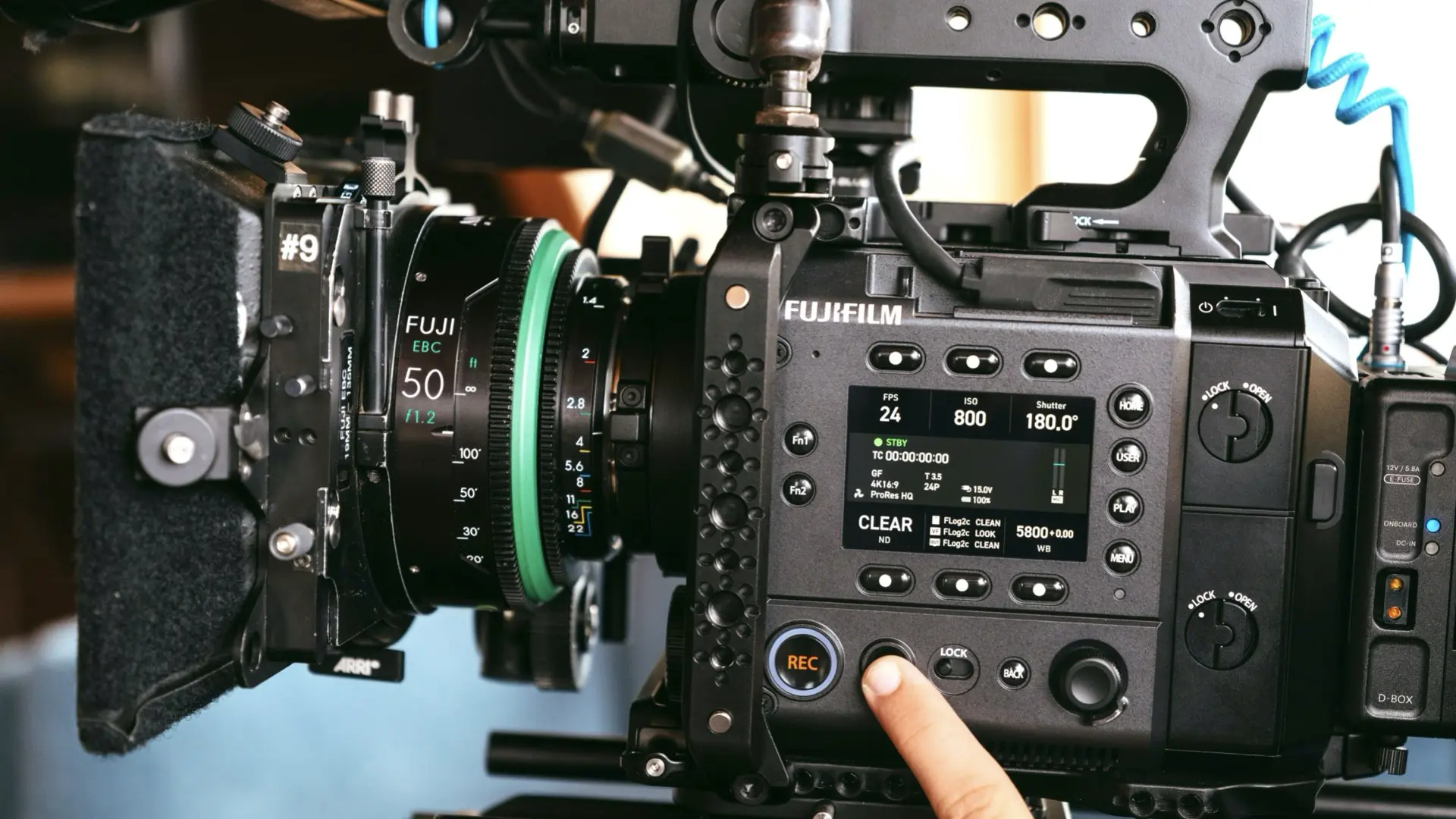Fujifilm has made its boldest step yet into the professional cinema space with the official launch of the GFX ETERNA 55. This is not another hybrid stills camera with video features bolted on, but a purpose-built cinema system designed from the ground up for filmmakers, with a price tag of $16,500 USD and first shipments scheduled for October 2025. By releasing this camera, Fujifilm is attempting something few manufacturers have tried: merging the company’s legacy in film stocks and color science with a truly large-format digital cinema platform. The implications are significant for cinematographers, rental houses, and studios that are always searching for new visual tools to set their projects apart. However, there are some challenges as well.
The GFX ETERNA 55 did not appear out of nowhere. For more than a year, YMCinema has been following Fujifilm’s progress with this project. Early on, in Fujifilm GFX ETERNA Announced: A Bold Entry Into Medium Format Cinema, it became clear that the company was serious about developing a dedicated filmmaking camera rather than a stills-based body with cinema features. This was followed by Fujifilm GFX ETERNA is an In-Housed GFX100 II, which explained how Fujifilm used the architecture of the GFX100 II medium-format stills camera as a development platform. That camera gave engineers the chance to experiment with sensor readout speeds, color profiles, and processing pipelines. The ETERNA 55 represents the culmination of those experiments. By March 2025, attention turned to performance details. In The Fujifilm GFX ETERNA’s Readout Speed Matches the Pyxis 6K, it was revealed that Fujifilm had tuned the system to rival established cinema cameras in readout speed. Minimizing rolling shutter is crucial for handheld work, rapid pans, or productions where action cannot be repeated. Finally, in June 2025, full specifications surfaced in Fujifilm GFX ETERNA Specs Revealed for the Medium Format Powerhouse, confirming what many had speculated: the ETERNA 55 would use one of the tallest sensors available for digital cinema, with multiple format modes to accommodate GF, Premista, Super35, and anamorphic lenses.
At the heart of the GFX ETERNA 55 is a 44 × 33 mm, 102-megapixel CMOS II HS sensor. While many high-end cameras emphasize width for resolution, Fujifilm is focusing on height. The 4:3 open gate format is particularly noteworthy, because it mirrors the proportions of classic 4-perf Super 35mm film but at a scale almost 1.7 times larger. This design provides cinematographers with more vertical information in every frame. For anamorphic lenses, the effect is striking: the taller sensor accommodates more of the squeezed image, enabling a final desqueezed frame with true cinematic scale. Even with spherical lenses, the added height allows for flexible cropping in post without sacrificing detail. The camera also supports multiple shooting modes: GF open gate, GF DCI, Premista, 35mm DCI, anamorphic 8K, and Super35. These choices ensure compatibility across different lenses and production styles. Fujifilm’s decision to design such a flexible imaging system shows that the company wants the ETERNA 55 to be more than a niche product.
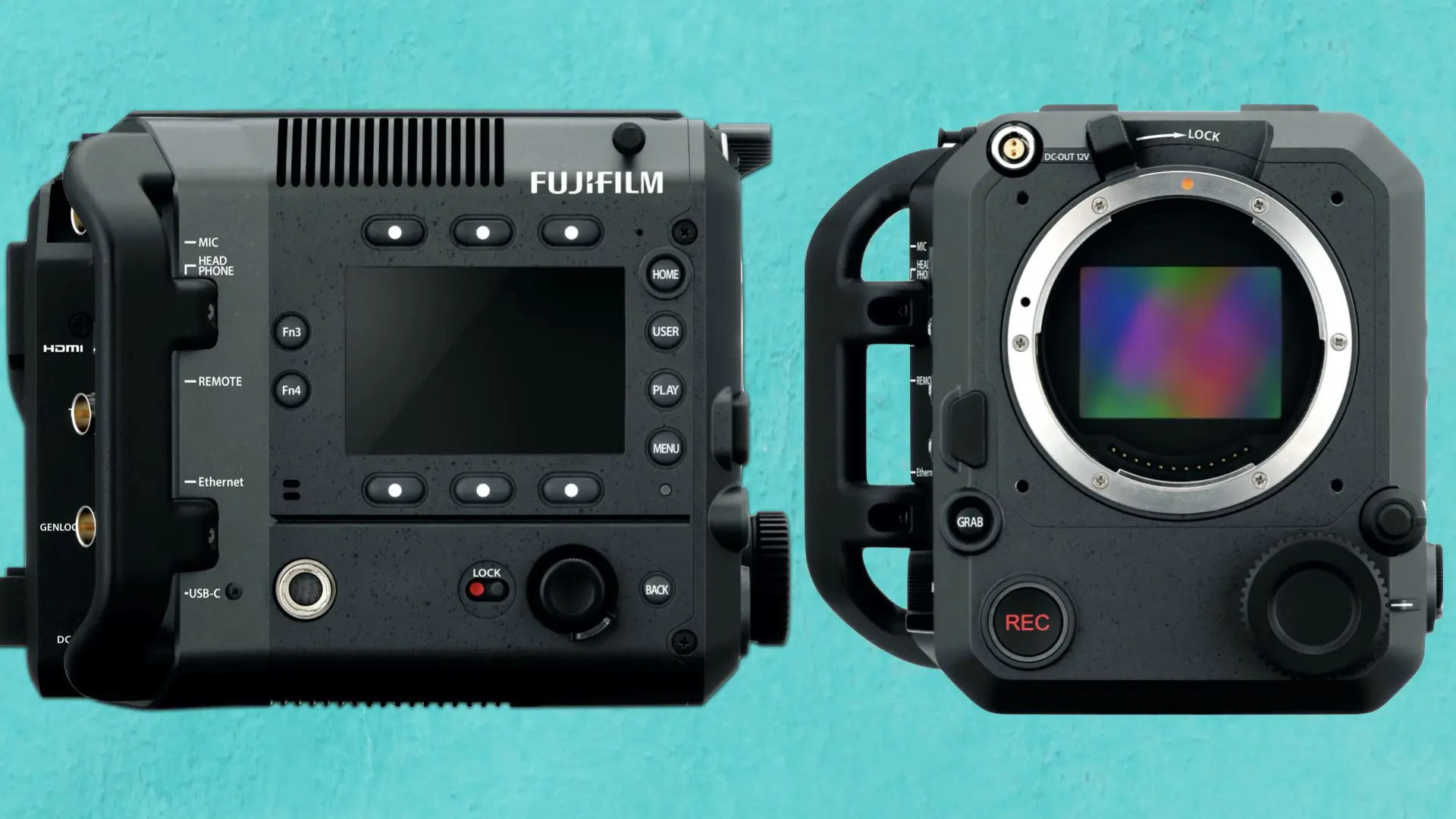
Cinematographers care about resolution, but they often care more about color. Fujifilm’s history in analog film emulsions and its long-standing Film Simulations are central to the ETERNA 55. The camera includes 20 Film Simulations, such as ETERNA, ACROS, PROVIA, and Velvia, and supports the import of up to 16 custom 3D LUTs. Fujifilm’s F-Log2 and F-Log2 C profiles offer more than 14 stops of dynamic range, giving filmmakers rich tonal detail in highlights and shadows. This is not simply about image capture — it’s about continuity from set to post. Directors and cinematographers can preview looks directly in-camera, then carry them through editorial and grading. This workflow echoes Fujifilm’s broader strategy. In Fujifilm GFX ETERNA Specs Revealed for the Medium Format Powerhouse, it was noted that LUT integration and film simulation options were being prioritized, positioning the ETERNA 55 as a camera that delivers not only technical performance but also artistic intent.
One of the standout features of the ETERNA 55 is how it integrates into modern production environments. The body records Apple ProRes 422 HQ, 422, LT, and Proxy internally, as well as HEVC/H.265 for lighter capture. For productions needing the highest quality, it can output 12-bit RAW over HDMI. The system also supports Frame.io Camera to Cloud, allowing footage to be uploaded directly to shared storage environments. This is crucial for distributed productions where editorial teams, colorists, or VFX houses may need immediate access to material. On the physical side, the body weighs 2 kg (4.4 pounds) and features dual side monitors, a 2000-nit 5-inch LCD, and a design that allows for hot-swapping external power while maintaining an internal NP-W235 battery. These usability improvements mark Fujifilm’s effort to show that the ETERNA 55 is ready for set life.
Fujifilm’s boldest claim is that the GFX ETERNA 55 offers a gateway into premium cinema. This is the domain of IMAX, ARRI ALEXA 65, and other large-format systems that provide images with a sense of grandeur. Premium cinema is about more than sharpness. It is about immersion. Larger sensors, especially taller ones, produce imagery that feels expansive, with depth and presence that smaller sensors cannot replicate. When audiences describe IMAX as “immersive,” they are reacting to the relationship between frame size, optics, and projection. In Blackmagic URSA Cine 17K 65 vs Fujifilm GFX ETERNA: A Knockout in the Medium Format Cinema Arena, two different approaches to medium format cinema were compared. Blackmagic pursues extreme resolution, while Fujifilm emphasizes sensor geometry and color. Both are strategies aimed at providing the kind of imagery once reserved for IMAX or 65mm film. By positioning the ETERNA 55 as a tool that can deliver tall-sensor, large-format imagery, Fujifilm is signaling to filmmakers that it wants to be part of that conversation.
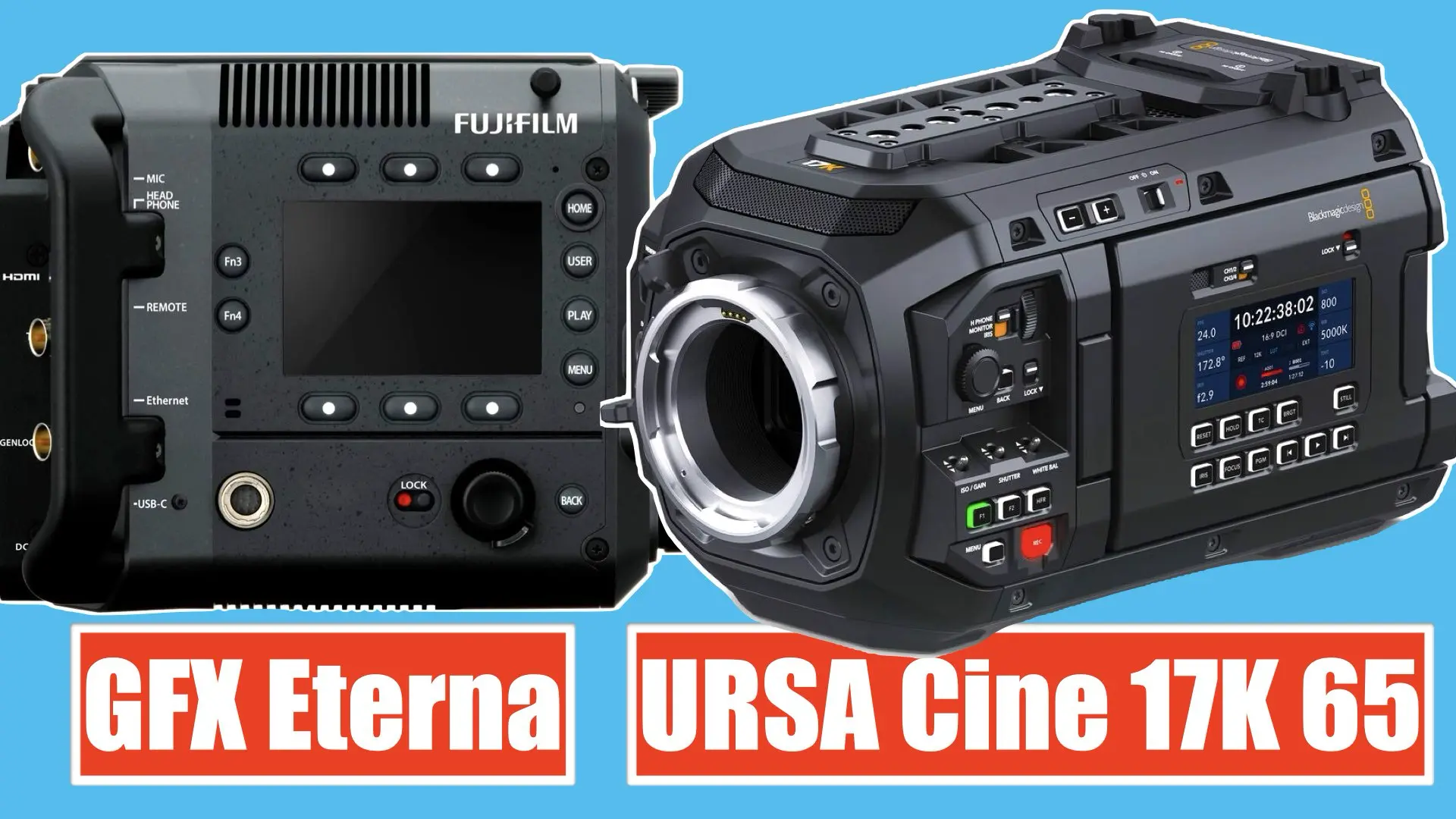
Tall sensor design: The 4:3 open gate format gives cinematographers a unique creative canvas.
Format versatility: Multiple recording modes ensure compatibility with diverse lenses and workflows.
Color heritage: Fujifilm’s Film Simulations and LUT options deliver trusted looks.
Workflow integration: Codec support, Frame.io connectivity, and ProRes proxy recording simplify post.
Production usability: Dual monitors, variable ND, and hot-swappable power make the camera practical on set.
Lens ecosystem: Medium-format cinema lenses are rare and expensive. While Fujifilm provides a PL mount adapter and launched the GF32-90mm T3.5 PZ OIS WR zoom, building a full kit of native options remains difficult.
Data management: High-resolution open gate capture creates massive file sizes, demanding more from storage, transfer, and editorial pipelines.
Adoption hurdles: Rental houses and studios are slow to trust new systems. ARRI and RED dominate this space, and Fujifilm must prove long-term reliability.
Price vs. competition: At $16,500 body-only, the ETERNA 55 is cheaper than some large-format systems but still a significant investment for owner-operators.
Scaling to IMAX standards: Claiming premium cinema status invites direct comparison with IMAX and ARRI 65 workflows, where Fujifilm’s system has not yet been tested.
The GFX ETERNA 55 could find its niche in productions that prioritize distinctive looks and cinematic scale but do not have access to or budget for ARRI 65 or IMAX. Examples include:
High-end independent features seeking standout imagery
Commercials and music videos where bold visuals matter
Documentaries needing tonal fidelity and large sensor presence
Boutique studios experimenting with new aspect ratios and lens pairings
For blockbuster productions or studios locked into ARRI or RED ecosystems, adoption may take longer.
The GFX ETERNA 55 is not designed to replace every cinema camera on the market. Instead, it is tailored for productions that value its unique combination of sensor height, color science, and format flexibility. To understand its role, it helps to imagine concrete scenarios across different genres.
Feature films and narrative cinema:
Independent filmmakers and boutique studios often seek tools that will give their projects a distinct visual signature. The tall sensor of the ETERNA 55, combined with Fujifilm’s Film Simulations and LUT workflow, allows directors of photography to produce imagery that immediately feels different from standard full-frame digital cinema.
Epic dramas: Productions set in wide landscapes can benefit from the additional vertical height of the 4:3 open gate format, especially if paired with anamorphic glass. The results can echo the grandeur of 65mm or IMAX, but at a fraction of the rental cost.
Character-driven stories: Shallow depth of field, tonal smoothness, and Fujifilm’s film-inspired looks can bring intimacy to close-up work, lending an “analog” texture without heavy post manipulation.
In this way, the ETERNA 55 offers independent productions a chance to elevate their visuals to a level that once required ARRI 65 or RED Monstro rentals.
Commercials and branded content:
High-end commercials often prioritize image presence and visual distinction. A camera like the ETERNA 55 fits this environment perfectly.
Fashion and luxury: Brands seeking refined skin tones, vibrant fabrics, and rich contrast will benefit from Fujifilm’s Film Simulations, which emulate stocks like Velvia or Classic Chrome.
Product showcase: Shallow depth of field at medium format sizes creates a sense of luxury and exclusivity, making everyday products appear premium.
Short-form content: Commercial shoots are often fast and highly collaborative. The ETERNA 55’s Frame.io Camera to Cloud integration enables instant review by remote clients or agencies, speeding up approvals.
Music videos and experimental art:
Music videos are often laboratories for visual experimentation. The ETERNA 55’s format flexibility — GF, Premista, Super35, anamorphic — provides directors with a toolkit for bold stylistic choices.
Anamorphic immersion: A tall sensor paired with anamorphic glass can produce widescreen frames with dramatic flares and distortion, perfect for expressive, stylized storytelling.
Mixed aspect ratios: Custom guides allow filmmakers to shoot sequences in different aspect ratios within the same project, adding to the artistic palette.
Color experimentation: The ability to load custom LUTs in-camera makes it easier to preview radical color treatments on set, aligning the creative team before post begins.
Documentaries and factual production:
Documentary cinematographers often need tools that are lightweight, versatile, and capable of handling unpredictable light. At 2 kg body-only, the ETERNA 55 can be configured into relatively compact rigs while still delivering large-sensor imagery.
Natural history: The tonal depth of medium format sensors provides smoother gradation in skies, oceans, and natural textures. Combined with Fujifilm’s film emulations, it can produce painterly results straight out of camera.
Portrait interviews: Documentaries often pivot between landscapes and intimate human stories. The ETERNA 55’s shallow depth of field and rich skin tone rendering make it ideal for this balance.
Low-light environments: With dual-base ISO at 800 and 3200, filmmakers can handle extreme lighting conditions without heavy compromises.
Live events and broadcast:
While not the first target market, the ETERNA 55 could find niche roles in live concerts, performance capture, or high-end streaming events. Its ability to output uncompressed 10-bit 4:2:2 and 12-bit RAW makes it suitable for multi-camera pipelines when paired with other cinema gear. Its hot-swappable battery design ensures continuity, and its connectivity (timecode, genlock, 12G-SDI) allows integration into broadcast workflows.
Weddings and premium private events:
Though niche, high-budget wedding filmmakers are always searching for ways to offer clients something truly unique. A camera like the ETERNA 55 can deliver cinematic images with a look unmatched by smaller formats. The shallow depth of field and film simulations could create wedding films that resemble feature narratives, appealing to clients willing to invest in premium storytelling.
These scenarios reveal a dual truth. On one hand, the GFX ETERNA 55 provides filmmakers with new creative tools across genres from indie features to high-end commercials. On the other, the practical challenges, lens availability, data management, and adoption hurdles, will limit its use in fast-turnaround broadcast television or budget-constrained productions. The success of the camera will likely hinge on its role as a visual differentiator. Productions that need to stand out will embrace it, while others will wait to see if Fujifilm’s gamble pays off in wider industry adoption.
The Fujifilm GFX ETERNA 55 is both an arrival and a gamble. By committing to a tall medium-format sensor, advanced color science, and production-ready usability, Fujifilm has built a camera that could challenge expectations of what digital cinema can look like. The journey has been carefully documented — from Fujifilm GFX ETERNA Announced: A Bold Entry Into Medium Format Cinema through Fujifilm GFX ETERNA is an In-Housed GFX100 II, The Fujifilm GFX ETERNA’s Readout Speed Matches the Pyxis 6K, and Fujifilm GFX ETERNA Specs Revealed for the Medium Format Powerhouse. Each step revealed more of Fujifilm’s intent to bring medium format into cinema. Whether the ETERNA 55 becomes a staple of rental houses or remains a boutique option will depend on adoption, lenses, and workflow support.

